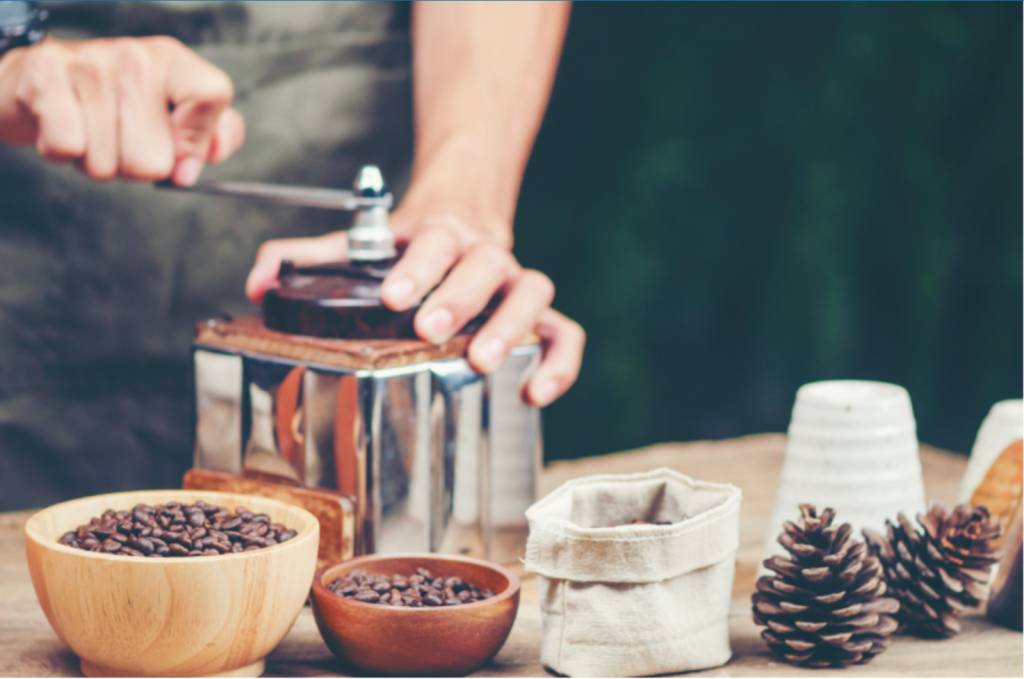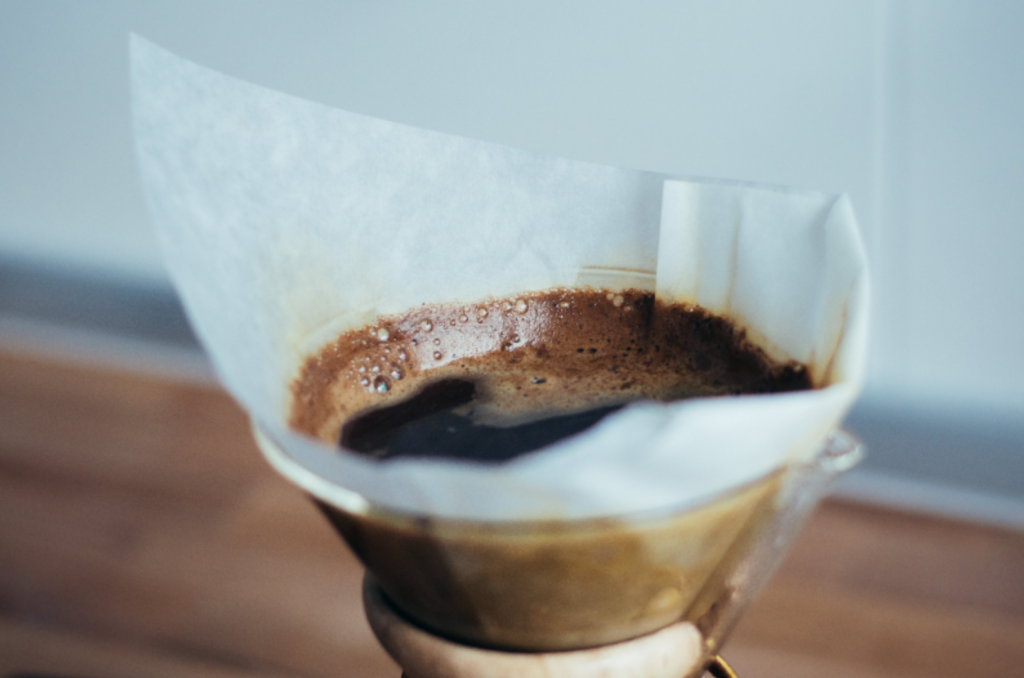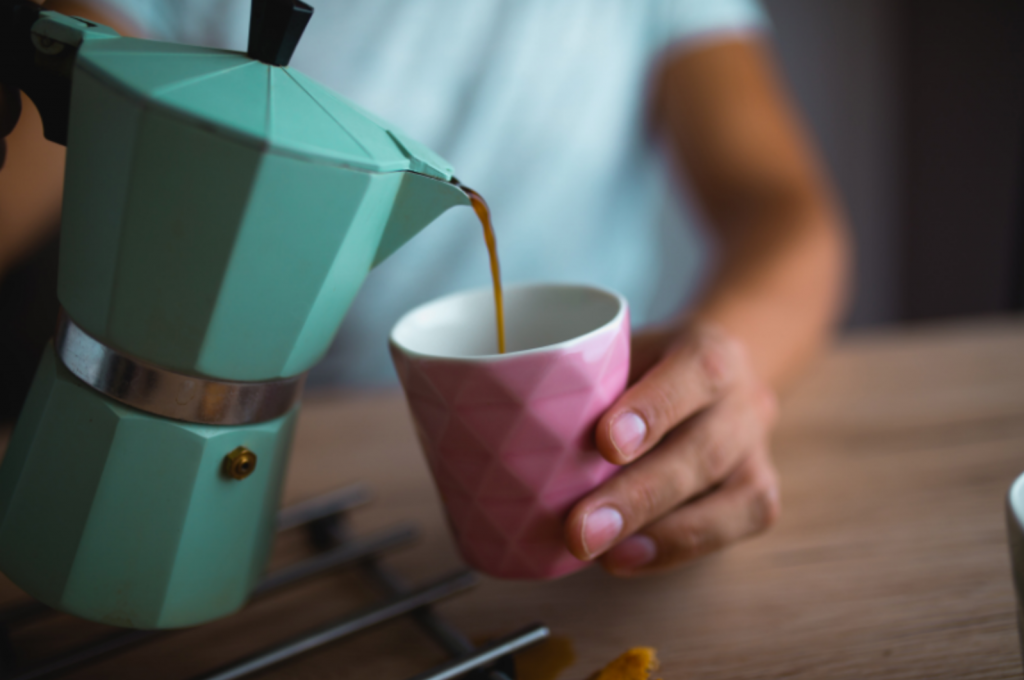Everything Coffee- Part III
Last Updated on February 17, 2023
Coffee blending, grinding, and brewing
Read: Everything coffee– part 1
Read: Everything coffee– part 2
Identifying unique coffee characteristics and elevating them through a process is what master roasters specialize in. Yes, we know that single-origin is becoming increasingly popular however, blending different coffees is still being widely utilized. Post roasting, the beans need to rest at least 12 hours if not more for their flavors to stabilize. In this time span, the beans continue to release CO2, the roasting chemistry stabilizes and the remaining water distributes itself equally. This results in a more balanced flavor profile.
The first step is to decide the composition of the blend however, the most crucial step is to decide whether to opt for “blend-before roast” or “blend after roast”.
Should you blend your coffee before or after roasting?
In large-scale operations, the most cost-effective and simple approach is to roast the entire blend together. This strategy costs low, however, visible differences appear post roasting due to the variety of the beans used in the blend.
On the other hand, applying optimized roasting conditions to both Arabica and Robusta separately elevate a specific flavor characteristic in one fraction and optimize another flavor note in a different fraction. This process is usually practiced for high-quality products. It is important to understand that no method is superior in nature and the choice of the method is at the behest of the roasters and the qualities they intend to have in the final product. [1]
What happens after roasting?
Roasted coffee beans now go through mechanical forces and transform into roast and ground coffee consisting of small particles. This process is otherwise known as grinding. Coffee grinding has a strong impact on the final brew of the coffee and therefore, it is a strong indicator of the final quality of your cup of coffee. The smell of freshly roasted and ground coffee powder is very intense as many entrapped odorants inside the roasted coffee beans are released upon grinding. There are multiple key indicators of this process however the most important factor is the particle size of the coffee grind.

Particle size distribution
A single particle of ground coffee has a particular dimension to it which may correspond to the mesh size of a sieve that the particle would just pass. However, coffee beans being a natural product will never have a uniform size or shape. It is usually spread over a range of sizes and is therefore called particle size distribution or PSD. The characteristic dimension is usually referred to as “x” corresponding to different sizes such as x10, x50, or x90. These are the characteristic dimensions or mesh sizes below which 10%, 50%, and 90% of all particles would be found, respectively.
There are some extremely fine particles that have an impact on the extraction as they could possibly block the pathways for water. They can clog filters which could impede the separation of the ground coffee from the extract. These particles are referred to as fines and are often below 100?m. The finest grind of roast coffee, typically below 50?m is then added to soluble coffee as a roast coffee component. Optimizing PSD is of priority, and experienced operators in industrial settings can control this factor by taking into account multiple parameters.
Industrial grinders work 24/7 and their functioning mimics that of a grain miller. On the other hand, for commercial use at the point of sale of private use, there are specialized small grinders that preserve the freshness of the coffee. The grinding technology in this case differs depending on the purpose of use, grind speed, hourly capacity, and need for grind quality. [2]
Brewing
Brewing is essentially done to extract a subtle balance of mouthfeel, taste, and flavor. Brew yield or extraction between 18% to 22% are considered good quality brews. When water comes into contact with the ground coffee, selective molecules are extracted from the coffee particles. All the molecules possess different physicochemical properties and are therefore not extracted the same way. Humans perceive certain compounds and the flavors they exhibit better when these compounds are present above a certain threshold quantity. These compounds are therefore the key molecules for coffee flavor. All these factors have a strong impact on how the extraction process is carried out. [3]

Coffee brew
Which variables affect the flavor of coffee?
Ideally, the two main variables are coffee and water however there are multiple factors under these components that affect the flavor of the coffee. Some of the key parameters are given below:
| Water | Coffee | Resulting variables |
| Quality | Weight | Water/coffee ratio |
| Quantity | Particle size and shape | Pressure |
| Temperature | Particle size distribution | Flow time and rate |
What is the importance of water in brewing coffee?
The quality of water– its hardness and acidity can affect the taste of the extract. Crema stability on espresso coffee is also affected by the quality of water. The mechanism can be explained by a change in ion content or by the interaction between the cations and protein/polysaccharide complexes, leading to a destabilization of the foaming mechanism.
The quantity of water- A good ratio of water volume to coffee weight is needed to have a great yield as well as the right flavor balance. The solubility of the flavored coffee is definitely one of the major factors to move the roasted coffee solids to the brew. Soluble compounds like sugars and caffeine are extracted within the first few seconds and end up giving a sweet-acidic taste profile. The less soluble compounds are extracted after a while and result in a more bitter and astringent flavor as a result of compounds like chlorogenic acid.
The temperature- that is recommended for brewing a hot coffee is 91-94 °C which will most definitely result in a good extraction and balanced flavor profile. As already mentioned, the extraction is determined by the solubility of the extracted molecules. This water solubility is temperature-dependent and generally increases with temperature.
At higher temperatures, the kinetic energy of water molecules also increases, and that also affects the flavor extraction in a positive way. Along with that lower viscosity of water helps water penetrate the coffee bed easily and help ease out the solubility of coffee compounds too. This effect explains why the amount of lipids in the brew increase with increasing water temperature that is important to impart a certain body and mouthfeel.
Different parameters that affect different types of coffee brew preparation
Each coffee preparation method has certain parameters that affect its outcome, let’s look at some of the most common coffee beverages below [3]
| Parameter | Boiling Coffee (Turkish) | Pour Over (Drip Filter) | French Press/Immersion Brew | Espresso | Moka Pot | Cold Brew |
| Water-to-coffee ratio (mL/g) | 20 | 13-20 | 15-20 | 3.5-6 | 9-15 | 4-15 |
| Particle size | Fine | Medium | Coarse | Medium | Medium | Coarse |
| Pressure (Bar) | 0 | 0.1 | 0 | 8-19 | 1-2 | 0-0.1 |
| Brewing time | 3-10min | 2-5min | 25-30s | 3-5 min | 2-24h |
Turkish Coffee/Boiled Coffee
This coffee is prepared by boiling coffee in water. The extraction depends on the diffusion of the soluble compounds of coffee at high temperatures resulting in intense, possibly bitter, and dark-chocolate flavors. Some sediments stay in the cup.
Pour Over Coffee
Ground coffee with a coarser size is put into a holder containing a filtering device. Depending on the particle size, changes in percolation speed, and change in contact time between water and coffee can be noticed. The type of filter also has an impact on the final brew.
French Press
Coarser coffee grounds are mixed with hot water and allowed to remain in contact for about 2-5 minutes. A plunger containing a filtering device is then used to separate the grounds from the final brew. The pressing of the coffee also squeezes oils out from the coffee bed, increasing the oil content of the final brew.
Espresso
For an espresso, hot water pressure is applied for a very short time to a roast and ground coffee cake with the help of a percolation machine. This results in a concentrated foamy beverage. Grind size is very important.
Moka pot maker
It is a pressurized tool with a three-chamber design. The bottom-most part provides pressurized water/steam that makes its way to the coffee bed in the middle and the magic portion or coffee is eventually delivered to the top chamber. It is important to practice this method carefully as it has a chance of over extracting the coffee.

Cold Brew
Cold-brew is essentially preparing the coffee by using cold water. It differs from iced coffee as iced coffee is prepared using hot water and cooled after extraction. The reason for cold brew’s long extraction time is because of the colder temperatures, the flavor compounds take longer to extract. The final product exhibits body, sweetness, and a certain extent of chocolate notes.
With this, we come to an end of the journey of coffee from the farms to your cup. We hope you’ve enjoyed the process as much and now understand what goes behind that blissful cup of coffee that makes your mornings happy.

About the Author
I am Anjali Patel, I come from India and completed my Masters in Food biotechnology from Wageningen University in the Netherlands before moving to Canada. Currently, I am working as an intern with Rainfed foods as an innovation and research associate. If not discussing food, you will see me reading books or chasing travel blogs to plan my next holiday.
Subscribe to our newsletter for details on mentorship sessions, workshops, webinars, as well as career and job fairs across Canada and the US!
References:
[1] Schenker, S., & Rothgeb, T. (2017). The roast—Creating the Beans’ signature. In The craft and science of coffee (pp. 245-271). Academic Press.
[2] von Blittersdorff, M., & Klatt, C. (2017). The Grind—Particles and Particularities. In The Craft and Science of Coffee (pp. 311-328). Academic Press.
[3] de ric Mestdagh, F., Glabasnia, A., & Giuliano, P. (2017). The BrewdExtracting for Excellence. The Craft and Science of Coffee, 355.
Image referencing-All images have been used from Canva and are copyright-free.


leave your comment